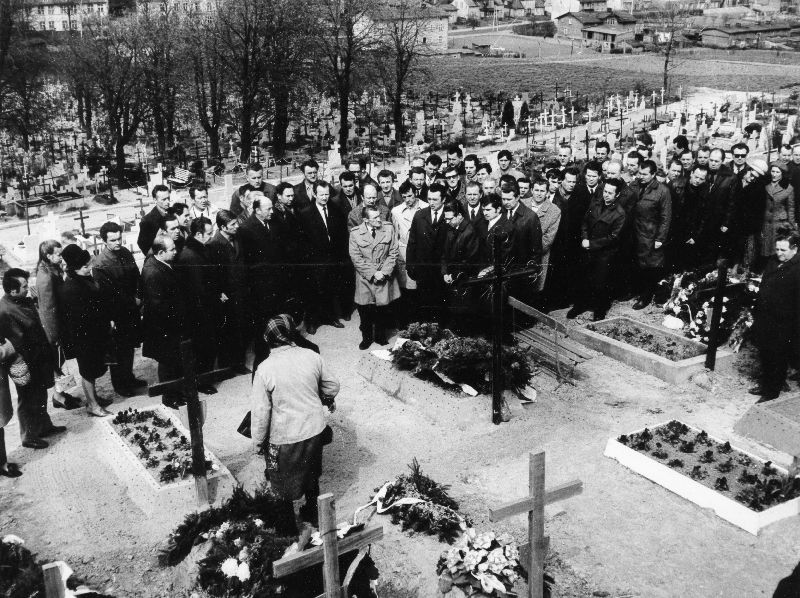First, he went missing
On 17 December 1970, Zbigniew Semczyszyn was supposed to go shopping with his mother, but the unusual events taking place a few streets away attracted the 23-year-old extremely: he wanted to see the 'party house' burn. He didn't come back home that evening. The next morning, his mother went out to look for him, first at his workplace, then at friends’ homes. On 22 December, she reported her son missing at the local MO [Citizens’ Militia] station. The officers asked for his photograph, took the description and noted what the boy had been wearing. Even though the woman asked them directly if they had any knowledge whether Zbigniew had been killed in the events that had taken place in the city a few days before, they just promised to look for him.
...and was found dead
The next day, one of her friends, a wife of a Militia functionary, told her to contact the District MO Headquarters. She went there with her husband and one of her daughters, but the officers didn’t want to tell them anything. Only when Zbigniew’s father lost his temper and started calling them murderers that albums with photographs of the bodies were brought. In the first one, on page two, they recognized Zbigniew. When the family recovered from the initial shock, they asked for his body so they could prepare the funeral. An officer gave them contact details to a cemetery attendant and said that they would learn everything there. They expected to find the corpse in the morgue; instead, they were told that their son had been buried on the night of 22 December.
The illegal exhumation
They were shown his grave, and the gravedigger, who turned out to be an old friend of the family, assured them that their son was really in it. However, the boy’s mother needed to be certain. The family decided to exhume the body – illegally and secretly. In January 1971, at night, Zbigniew’s friends unearthed the casket and opened the lid. The mother, unable to bear the sight, was dragged away from the open coffin. In her place, the sister took the task of identifying the body. She approached it, holding her brother's photo in one hand and a glove in the other. When she looked at the victim's face, she also had a fit of hysteria. The others had to gag her cries with the glove. Then, they buried the casket and sneaked out of the cemetery one by one. The next morning, the family were visited by the regime’s functionaries, who accused them of digging up the body. The dead man's mother admitted to it and was ordered to report at the MO station. She didn’t go. The officers kept coming and demanding the names of people who helped her in the illegal exhumation. To no avail.
The night-time burial procedure
The night funerals were organized by the Security Service. A witness said that “they came to selected families after dark, expressed sympathy and offered to take them to their relatives’ funeral.” The families found at home were brought to the cemetery. There, illuminated by the headlights of trucks, and surrounded by MO officers armed with automatic weapons, the gravediggers buried the bodies in the previously prepared plots. Mistakes happened, several coffins needed to be opened to find the right corpse, and some bodies turned out to be undressed. An older priest was present at the scene; contrary to later legends, he was not a disguised officer, but a vicar from the garrison church. The funerals would end around five in the morning. As part of the obliteration of the traces of the massacre, a false date of death was written on the headstones.
The failed cover-up
However, all these efforts failed. The night-time burials only fueled the popular opinion that the number of victims of the December revolt amounted to hundreds, maybe thousands. On 18 January 1971, the District Prosecutor's Office published the official list of victims and their addresses, which were to make it credible and dispel the rumours. Yet, paradoxically, the list, even though true, changed nothing, because the announcement also claimed that "the relatives of the deceased participated in the funerals, and all costs were covered by the state", which "provided the families with comprehensive care and financial support."
Paweł Miedziński, PhD
The IPN branch in Szczecin
